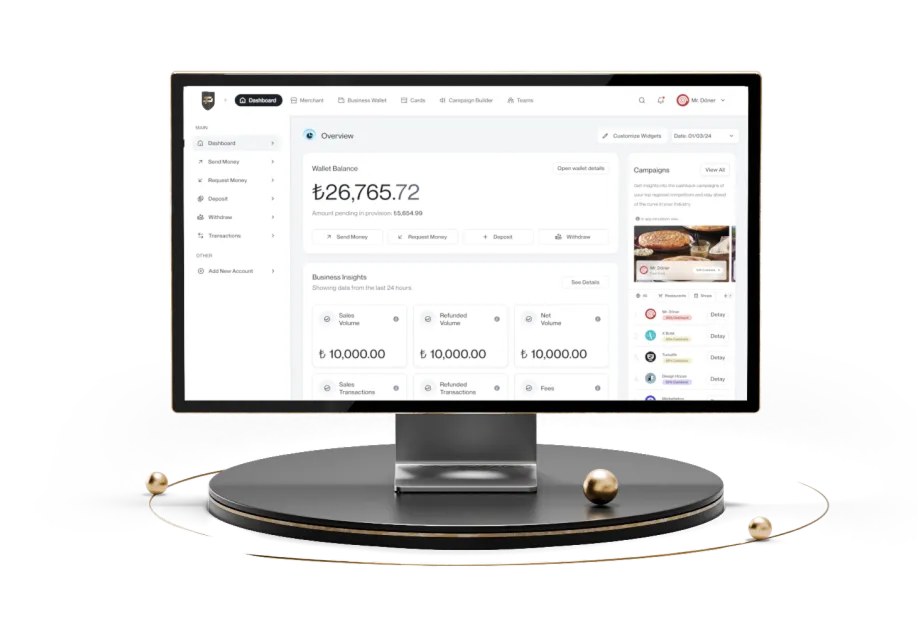What is a Reverse Repo?
Reverse repos, which are among the short-term financing instruments, play a crucial role in both the implementation of central banks’ monetary policies and in allowing investors to manage their portfolios securely. Especially during periods of inflation control, reverse repo operations are used to withdraw liquidity from markets and ensure interest rate control. In this article, we answer the questions of what a reverse repo is, how it works, the differences between a repo and a reverse repo, how the Central Bank determines reverse repo rates, and what advantages it offers to investors.
What is a reverse repo?
The transaction of purchasing securities with the commitment to resell them after a specific period is called a reverse repo. In other words, the buyer (the party conducting the reverse repo) purchases an asset (such as a treasury bond) in the market as collateral and resells this asset to the seller (usually the central bank or a brokerage house) at the end of the term. Let’s explain this with an example. For instance, the central bank arranges a reverse repo worth 100 billion TL in the interbank market. Banks purchase securities with the condition of reselling them at the end of the term with the predetermined interest and deposit this amount with the central bank. In this way, the amount of cash in the market decreases, and the interest rate policy remains effective.

How are reverse repo transactions carried out?
Reverse repo transactions are carried out step by step as follows:
Finding a counterparty
A bank, fund management company, or investor wishing to conduct a reverse repo typically transacts with a counterparty such as a brokerage house or the central bank.
Signing the agreement
Transaction conditions, including the transaction amount, maturity, interest rate, and type of collateral, are determined. These conditions are fixed in writing within the framework of the brokerage house or open market rules.
Delivery of securities
The buyer takes delivery of the securities with the commitment to resell them at the end of the term. The brokerage house usually holds these securities.
Interest income and cash transfer
At the end of the term, the buyer pays the principal + interest amount to the seller. The interest rate is specified in the agreement.
Resale of securities
The transaction is completed when the seller makes the principal + interest payment and takes back the securities.
What is the difference between repo and reverse repo?
The differences between repo and reverse repo are as follows:
Role of the party
The repo transaction is evaluated from the perspective of the party selling the securities and receiving cash. This party undertakes to repurchase the securities at the end of the term. The reverse repo transaction, on the other hand, is evaluated from the perspective of the party that purchases the securities and provides cash. The buyer undertakes to resell the securities at the end of the term.
Purpose
In a repo transaction, used to meet short-term cash needs, the party needing cash obtains cash similar to credit, whereas the reverse repo transaction is carried out to evaluate excess cash with low risk, and the cash-providing party earns interest income.
Price and interest flow
In a repo transaction, the seller receives cash and repays it at the end of the term with a price difference (repo rate). In a reverse repo, the buyer provides cash and retrieves it at the end of the term, earning interest income due to the price difference.
Central Bank policy
While the Central Bank provides liquidity to the market through repo transactions, it withdraws liquidity from the market through reverse repo transactions.

Reverse repo rates and Central Bank policies
The Central Bank of the Republic of Turkey (CBRT) announced in the Monetary Policy Committee (MPC) meeting held in June 2025 that the one-week repo (policy rate) was kept constant at 46%. In line with this decision, the overnight lending rate was fixed at 49% and the overnight borrowing rate at 44.5%. The Committee also emphasized that it would maintain a tight monetary policy until price stability is achieved, confirming the slowdown in inflation. Looking at short-term market-based indicators, the TLREF rates calculated by Borsa Istanbul stood at 48.3955% as of June 25, 2025, and 46.7095% the following day. These rates indicate that the market interest rate, based on overnight repo and reverse repo transactions, fluctuates within the 46%–49% range. Additionally, it can be stated that reverse repo rates and the structure of the policy rate in Turkey form part of the CBRT’s tight monetary policy aimed at controlling inflation and ensuring price stability. For the period after July, signs of easing are being observed.
The advantages of reverse repo for investors
The advantages that reverse repo offers to investors can be listed as follows:
Low-risk return
Since high-quality securities such as government bonds or treasury bills are used as collateral, reverse repo transactions are highly secure.
Liquidity management
Thanks to the reverse repo, investors who need cash can quickly obtain liquidity without having to sell their portfolios.
Funding without portfolio value loss
Since assets are not sold in reverse repo transactions, short-term funding can be obtained without being affected by market volatility.
Opportunity to repurchase bonds or treasury bills
With the “Buy, then resell” structure of reverse repo transactions, the portfolio is protected, and essential investment instruments are not permanently sold.
Interest income
Reverse repo provides a fixed and predetermined interest rate, offering risk-free income and low-risk fixed returns.
This blog post contains general information, not legal, financial, or investment advice. The content is prepared for informational purposes only, and you are advised to seek professional advice for your specific circumstances. The expressions in this article do not carry any binding nature or responsibility and reflect only the author’s evaluation. All your decisions are your responsibility, and Papel Electronic Money and Payment Services Inc. accepts no liability for any consequences arising from them.

